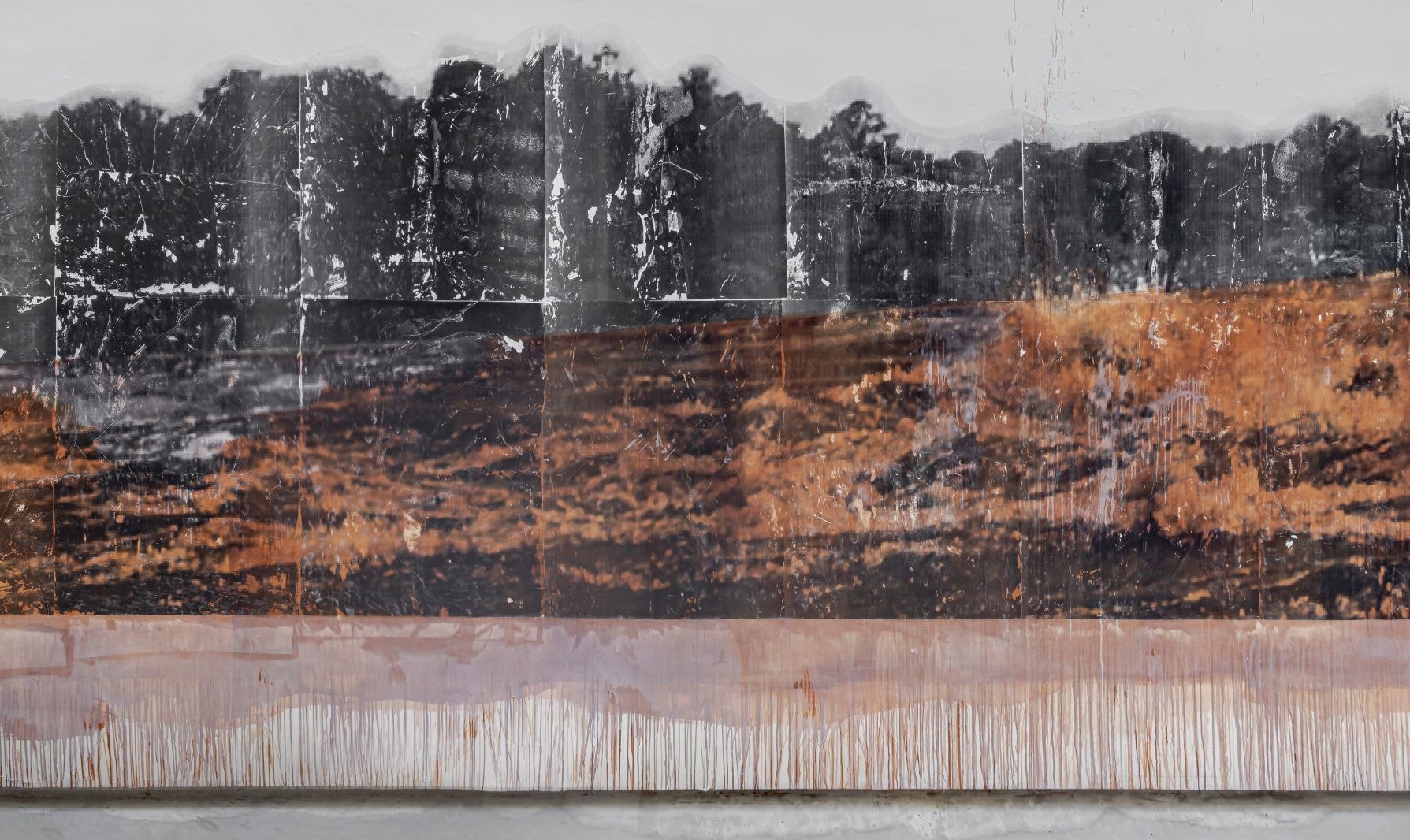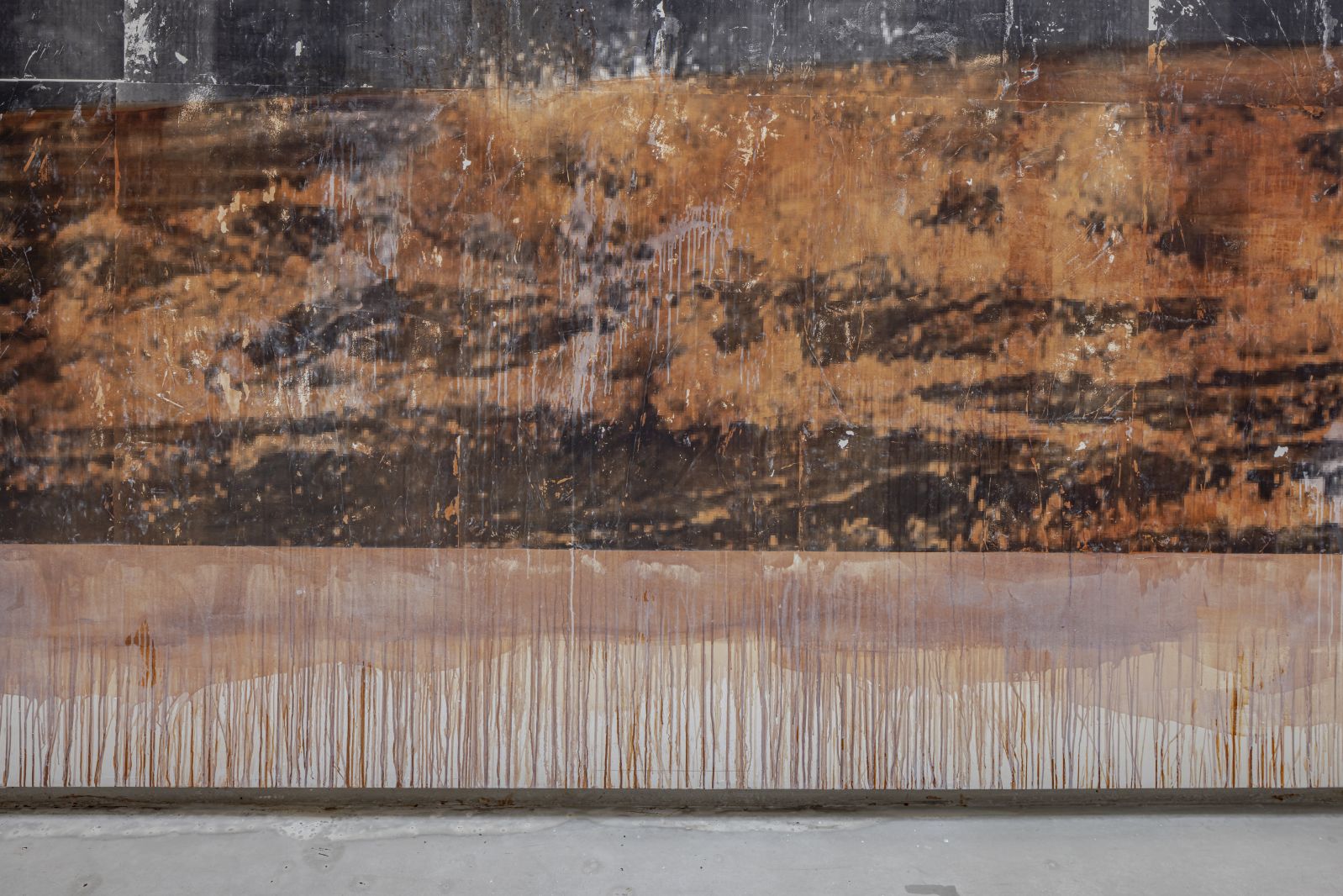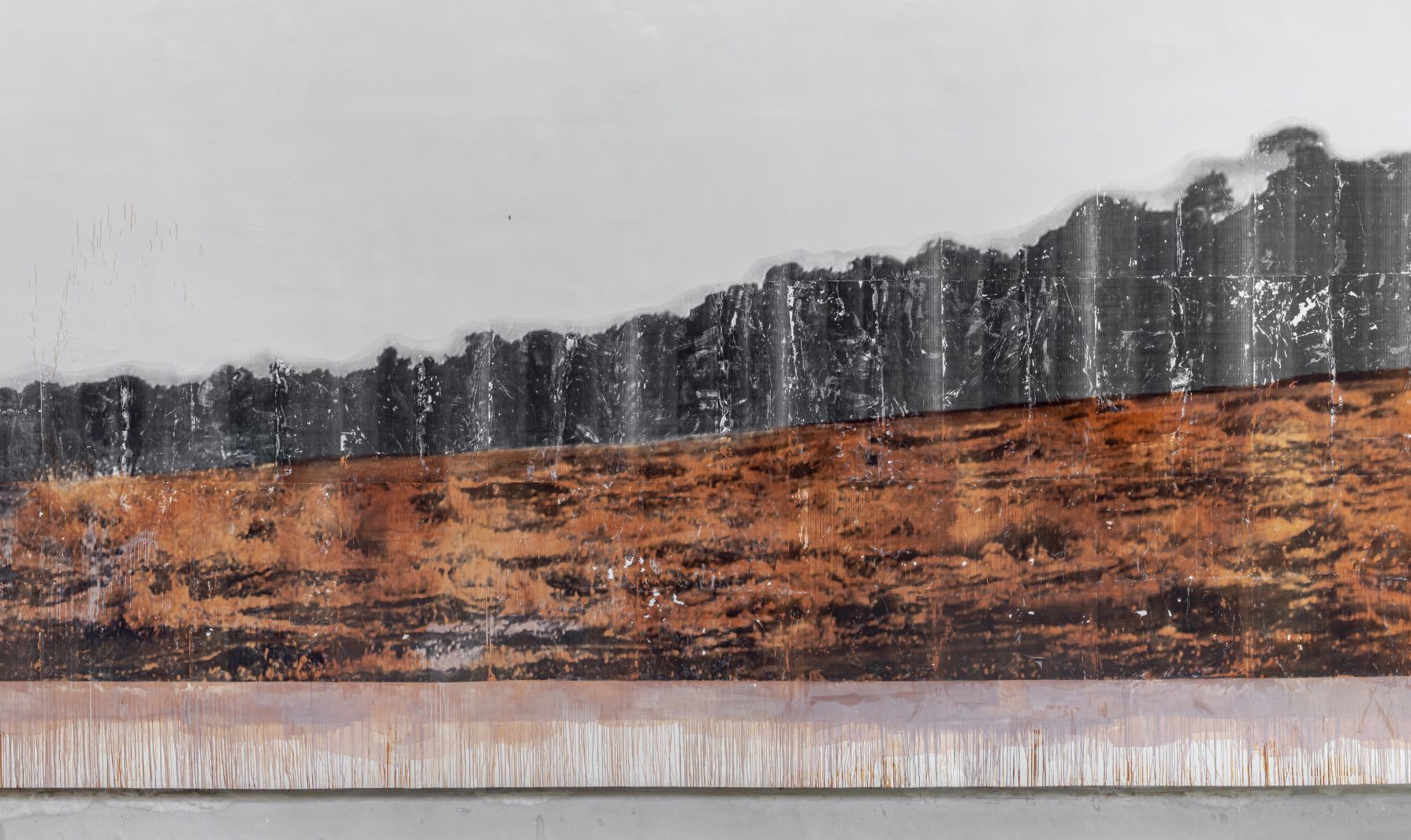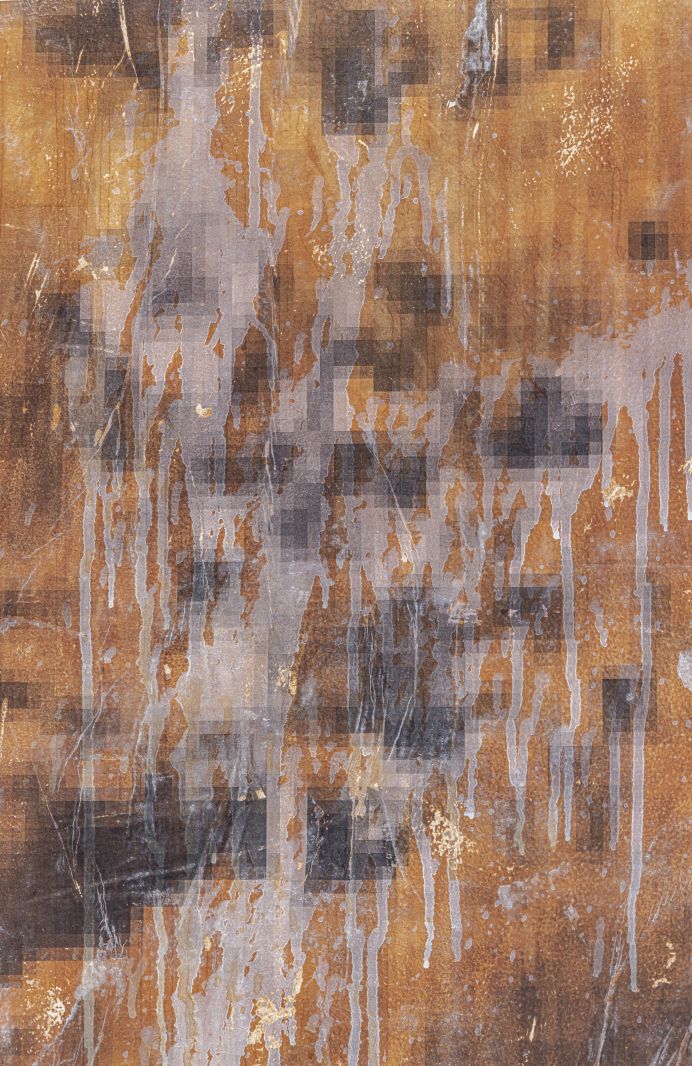DENSE “having parts that are close together so that it is difficult to go or see through.” [1]
DENSE is Sandra Brewster’s invitation to contemplate the waters and lands that connect us to our ancestors, to our families, to ourselves. The waters where our lives begin, the rivers of home, and loving land. DENSE goes beyond that even, and encourages us to consider the beautifully complex space within ourselves that is at the intersection of what we know about our ancestors and that which remains hidden.
Currently on view at The Power Plant on the Harbourfront of Toronto, DENSE is an installation comprised of two photo-based gel transfers in the Fleck Clerestory. Framed by expansive height and overhead skylights that allow the ever-changing sun in, the central free-standing walls are each covered with a photograph that has been embedded into the wall itself. On the east wall, DENSE invites the visitor to experience the Essequibo River of Guyana. On the west wall, we are met with a forest collage composed of Canadian and Guyanese forests, both real and imagined.
I enter as someone who longs for this river, for the Guyanese forests, for lands and waters I’ve never known but share belonging to and separation from. I also am deeply connected to the trees in the small forest that sit at the heart of the neighborhood I live in, the trees here in Canada. The east wall conjures up questions like: What if “home is a foreign place”?[2] How do you find home? The west wall asks: How do you make home? What does it mean to make a home on Indigenous lands as a non-Indigenous person? Do you share or do you occupy? How do you make home through your relationships with beings who are more-than-human?
We are met with a dense landscape made up of photos and illustrations of both Canadian and Guyanese trees quilted together in harmony. A visual representation of the memories, both our own and those shared by family, friends, community that are passed down, creating the memoryscape of who we are through places imagined, places visited and places yet to come. Joséphine Denis, the curator of the exhibition and TD Curator of Education and Outreach Fellow at The Power Plant, asks: “What memories are lost in the process of transferring memories from one generation to another?”
As I walk alongside the work and between these walls, my movement tricks my mind’s eye into seeing the water’s edge move with me. The waves soothe my placelessness but only for a moment. As I stare into the murky red-brown water, I recognize that its ancient depths are unknowable.
Brewster says often when speaking about the Essequibo River: “The water was so close to us and of all the things to reflect on, I remember that piranhas lived below. Don’t put your hand in, that urge to caress the rapids as our boat bounded quickly across the surface had to be suppressed.”[3]
The opacity of the water reminds me that we are also composed of layers, of sediment that sinks to the bottom of ourselves.
To invoke the Essequibo River, water was necessary. The process of applying the photograph to the wall was labour-intensive. The artwork required true physical work and the cost of revealing itself required an offering of ourselves, of our bodies.
I was present to help on one of the install days. Brewster explained that you must plunge your hands into water as hot as your hands can take and soak your cloth with it. Once you took your cloth to the wall, soaked in water just under the boiling point, you rub the paper away. Denis reflects on this: “In the same way that we go through that process of adhering and imbuing the wall with the ink, its the same way that family members try to impart stories onto their children by trying to transfer a sense of belonging to them through storytelling.”
The thing that struck me was just how aware this process made me of my body, not just my hands. We were embedding Brewster’s work right into the walls of this institution forever. No matter if the piece gets sanded down and painted over, the piece “will always be a part of the architecture of the space.”[4]
When reflecting on my experience later on with artist Emmanuel Osahor, we spoke about the physicality that gel transfers require. The process of scrubbing off the paper backing from the wall to leave only the ink of the photograph compels your whole attention, your mind and body.I remember that night, going to sleep with wrinkly hands and a full heart.
In our conversation, we speak about the process as a two-way exchange, the fact that in installing the work, each pair of hands that it took to reveal the river and the trees leaves its mark. Osahor then reminds me, “And it leaves its trace on you.”
Visit The Power Plant website for more information about Sandra Brewster’s By Way of Communion exhibition and don’t forget to take a look at their Dynamic Public Program for Closing Week of the exhibition
—
Raven Spiratos holds a Masters of Art History from McGill University, supervised by Dr. Charmaine A. Nelson. Spiratos’ research interests include Black Canadian art histories, diasporic art histories and Canadian slavery studies. Her SSRC-funded Master’s thesis analyzed the representations of Black Canadians of African, African-European and Afro-Indigenous heritage from the nineteenth century until the present. Spiratos is currently a Curator-in-residence at BAND Gallery.
Sandra Brewster is a Canadian visual artist based in Toronto. Her work has been exhibited nationally and abroad. A recipient of the Toronto Friends of the Visual Arts Artist Prize (2018) and the Gattuso Prize for Scotiabank CONTACT Photography Festival (2017), Brewster has been recognized for her community-based practice that centres a Black presence located in Canada. The daughter of Guyanese-born parents, she is especially attuned to the experiences of people of Caribbean heritage and their ongoing relationships with back home. She received a Masters of Visual Studies from the University of Toronto. Brewster is represented by Georgia Scherman Projects.[5]








